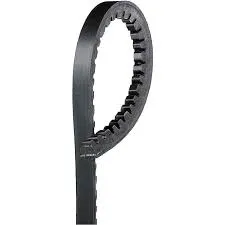- Arabic
- French
- Russian
- Spanish
- Portuguese
- Turkish
- Armenian
- English
- Albanian
- Amharic
- Azerbaijani
- Basque
- Belarusian
- Bengali
- Bosnian
- Bulgarian
- Catalan
- Cebuano
- Corsican
- Croatian
- Czech
- Danish
- Dutch
- Afrikaans
- Esperanto
- Estonian
- Finnish
- Frisian
- Galician
- Georgian
- German
- Greek
- Gujarati
- Haitian Creole
- hausa
- hawaiian
- Hebrew
- Hindi
- Miao
- Hungarian
- Icelandic
- igbo
- Indonesian
- irish
- Italian
- Japanese
- Javanese
- Kannada
- kazakh
- Khmer
- Rwandese
- Korean
- Kurdish
- Kyrgyz
- Lao
- Latin
- Latvian
- Lithuanian
- Luxembourgish
- Macedonian
- Malgashi
- Malay
- Malayalam
- Maltese
- Maori
- Marathi
- Mongolian
- Myanmar
- Nepali
- Norwegian
- Norwegian
- Occitan
- Pashto
- Persian
- Polish
- Punjabi
- Romanian
- Samoan
- Scottish Gaelic
- Serbian
- Sesotho
- Shona
- Sindhi
- Sinhala
- Slovak
- Slovenian
- Somali
- Sundanese
- Swahili
- Swedish
- Tagalog
- Tajik
- Tamil
- Tatar
- Telugu
- Thai
- Turkmen
- Ukrainian
- Urdu
- Uighur
- Uzbek
- Vietnamese
- Welsh
- Bantu
- Yiddish
- Yoruba
- Zulu
அக் . 15, 2024 03:43 Back to list
Understanding the Role of Belts in Motorcycle Performance and Maintenance
The Importance of Belts in Motorcycles
Motorcycles are known for their speed, agility, and thrilling riding experience. However, the proper functionality of a motorcycle is dependent on various mechanical systems that work together harmoniously. One of the crucial components that significantly influences a motorcycle's performance is the belt drive system. This article explores the importance of belts in motorcycles, their advantages, and considerations for maintenance.
Understanding Belt Drive Systems
Belt drives have gained popularity in motorcycles, particularly in cruiser models. Unlike chain or shaft drives, belt drives utilize a flexible belt to transfer power from the engine to the rear wheel. The belt is usually made from durable materials such as fiberglass-reinforced rubber, which provides flexibility while ensuring strength. The system consists of a pully attached to the engine and a rear pully on the wheel, allowing smooth rotational motion.
Advantages of Belt Drives
1. Smooth Operation One of the most significant advantages of belt drive systems is their ability to deliver power smoothly. The soft rubber materials used in belts reduce vibrations and noise, providing a more comfortable ride. This is particularly beneficial for long-distance cruisers where rider comfort is paramount.
2. Low Maintenance Compared to chain drives that require regular lubrication and adjustment, belt drives are relatively low maintenance. Riders do not need to worry about oiling the belt or replacing it as frequently, which can save time and money in the long run.
3. Durability Belt drives are known for their resilience. While they may have a limited lifespan compared to chains (typically lasting between 20,000 to 30,000 miles), they are less susceptible to rust and damage from environmental factors. A well-maintained belt can provide reliable performance for many riding seasons.
belt in motorcycle

4. Clean Operation Since belt systems do not require lubrication, they operate cleanly without the greasy mess associated with chain systems. This cleanliness is appealing to many riders as it reduces the risk of getting dirt and oil on clothing and motorcycle components.
5. Reduced Weight Belt drives tend to be lighter than their chain counterparts. The reduction in weight can enhance the motorcycle’s overall performance, providing better acceleration and handling.
Considerations for Maintenance
While belt drives offer numerous advantages, riders must still perform basic maintenance to ensure longevity. Regular inspections should be a part of any rider's routine. Look for signs of wear, such as fraying or cracks in the belt, and check the tension to ensure it is neither too loose nor too tight. A misaligned belt can lead to uneven wear and potential failure, so proper alignment should be part of regular maintenance checks.
In contrast to the rigorous maintenance required by chain systems, belts demand minimal intervention. However, riders should not completely neglect their belt drive systems. A clean belt will perform better, so gently dusting it off and ensuring it is free of debris is beneficial.
Conclusion
In conclusion, belts play a significant role in the operation and efficiency of motorcycles, particularly those designed for cruising. Their smooth performance, low maintenance requirements, and durability make them an attractive option for many riders. While they do require occasional checks and maintenance, their overall benefits can enhance the riding experience significantly. As motorcycle technology evolves, the belt drive system will likely continue to be a popular choice, providing riders with a comfortable, efficient, and enjoyable ride. Whether you are a seasoned rider or a newcomer, understanding the role of the belt in your motorcycle can lead to better maintenance practices and a superior riding experience.
-
Korean Auto Parts Timing Belt 24312-37500 For Hyundai/Kia
NewsMar.07,2025
-
7PK2300 90916-T2024 RIBBED BELT POLY V BELT PK BELT
NewsMar.07,2025
-
Chinese Auto Belt Factory 310-2M-22 For BMW/Mercedes-Benz
NewsMar.07,2025
-
Chinese Auto Belt Factory 310-2M-22 For BMW/Mercedes-Benz
NewsMar.07,2025
-
90916-02660 PK Belt 6PK1680 For Toyota
NewsMar.07,2025
-
drive belt serpentine belt
NewsMar.07,2025

